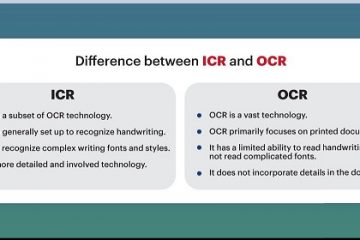ITIL 4 is one of four controlling skilled frameworks that provide appropriate suggestions based on the ITIL 4 Foundation principles. Service management is created and delivered, as well as the resources, technology, and processes that enable it.
The ITIL framework of the four-dimensional model is a guide for ensuring that people remember all of the ingredients and don’t get too dependent on one.
A different combination of ingredients is needed for the supply and support of various services and goods. Since no single ingredient can provide value on its own, a systemic approach is expected when creating and improving goods and services: consider all measurements when making changes.
The company’s primary emphasis is on consistently achieving its goals. The world in which it operates introduces several conditions that must be understood for the organization to improve its effectiveness. It must meet its objectives and operate as efficiently as possible.
The different elements of service administration, as well as the accomplishment of service goals, would not occur independently. Its performance is determined by how well each of these functions performs under ways consistent.
The four ITIL certification course measurements are elements used to produce high-quality goods and services that add value to customers. The 4 forms which help the organization are:
- Organizations and people
- Value streams and processes
- Information and technology
- Partner and suppliers
Organizations and people
The organization’s staff and pattern primarily promote the company’s goal and strategy. The function, scale, and sophistication of the organization have all changed as a result of the changing economy, technologies, and individual capabilities.
In an organization, one should always aim for the growth of the company. It will help you to showcase your abilities in the implementation of ideas and methods.
The principles of corporate changes match the organization’s changing scenarios. The transformation of the organization system is influenced by duties and obligations, authority and accountability, teamwork and cooperation, technology enablement, procedures, activities, and regulations.
IT service management organizational structure is a unique advantage that is founded on the base of order, lines of responsibility, or professional framework.
Generally, this is how corporations were built in the past, with well-defined layers of management and a coordinated organization that will have the greatest results.
Companies today are becoming more high-tech, requiring the hiring of individuals with technical skills. However, facets of their personality characteristics such as their ability to interact, cooperate, control, and so on are also essential considerations.
A foundation’s officially defined framework cannot be sufficient to provide the necessary efficacy and performance. It necessitates ongoing change, with a changing culture that is aligned with company goals, ongoing skill and capability development, and employee engagement, among other things.
Value Streams and Processes
Value streams and processes are primarily concerned with ensuring the alignment and IT process management of various activities and parts that lead to the organization’s best value generation.
This consideration focuses on how the company has organized its activities or processes, as well as how it promotes and maintains productivity improvements for all participants.
A value stream is a series of principles that a company takes to produce and distribute goods and services to a consumer, according to the definition. A value stream is a set of operations that make up a foundation’s global market.
The value stream should be considered when structuring a company’s goods or delivery it should have a good understanding of what is distributed, how it is shipped, and how to continuously enhance those aspects.
This necessitates the recognition and comprehension of the value chain, as well as the ability to see the big picture.
The ITIL 4 Foundation volume shows how the service business process strategic plan facilitates the production of various forms of value, such as event resolution, software problem-solving, IT connections with consumers, and new software engineering.
Information and technology
Processed data with a particular meaning is referred to as information. For instance, an event dump for a certain period would be utilized to obtain data that will be used to gain an understanding of it.
Data is developed and maintained for each IT service. It’s also used in the construction, delivery, and maintenance of systems. In today’s corporate world, the use of technologies to manage data and analysis is critical to satisfying the rapidly evolving demands of users and customers.
The use of getting an ITIL certification helps make technology increase the organization’s productivity and profitability. Data as well as the systems that process and analyze it is a key element of supplier evaluation. Indeed, information is the meaning in certain ways, such as Targeted keywords.
When it comes to internet communication knowledge, there are two perspectives to consider: 1) How they allow you to manage your supply chain 2) supporting specific service value sources and wider service management abilities.
Data processing is the most important criterion for providing service to consumers, so choosing the best information is critical.
The organizational modern culture attitude toward technological development is critical. People’s abilities and expertise to deal with technology and its complexities, as well as their ability to acquire the right skills by self-grooming regularly, is extremely important.
Partner and suppliers
The partner & suppliers aspect of ITIL 4 certification discusses the value of working with affiliates to ensure the effectiveness of management processes and their variables.
A company is both a manufacturer and a customer of services, and they require partners and suppliers to enable them to offer the service. That being said, based on skills, manufacturing preferences, and compliance criteria, the range and extent to which companies incorporate manufacturers into their supply chains vary.
Partners and distributors will be engaged in the supply chain, including planning, development, delivery, support, and continuous improvement of the item or brand.
The aim of an organization’s partnership with a partner or provider is to obtain a particular service or product that will support the organization’s existing mission and add value to its customers.
Hence this was all about the four key factors of an organization structure based on the ITIL 4 principles. Hope you cleared the doubt concept of your by reading the above content, hope you liked the above content and got sufficient knowledge through it.




